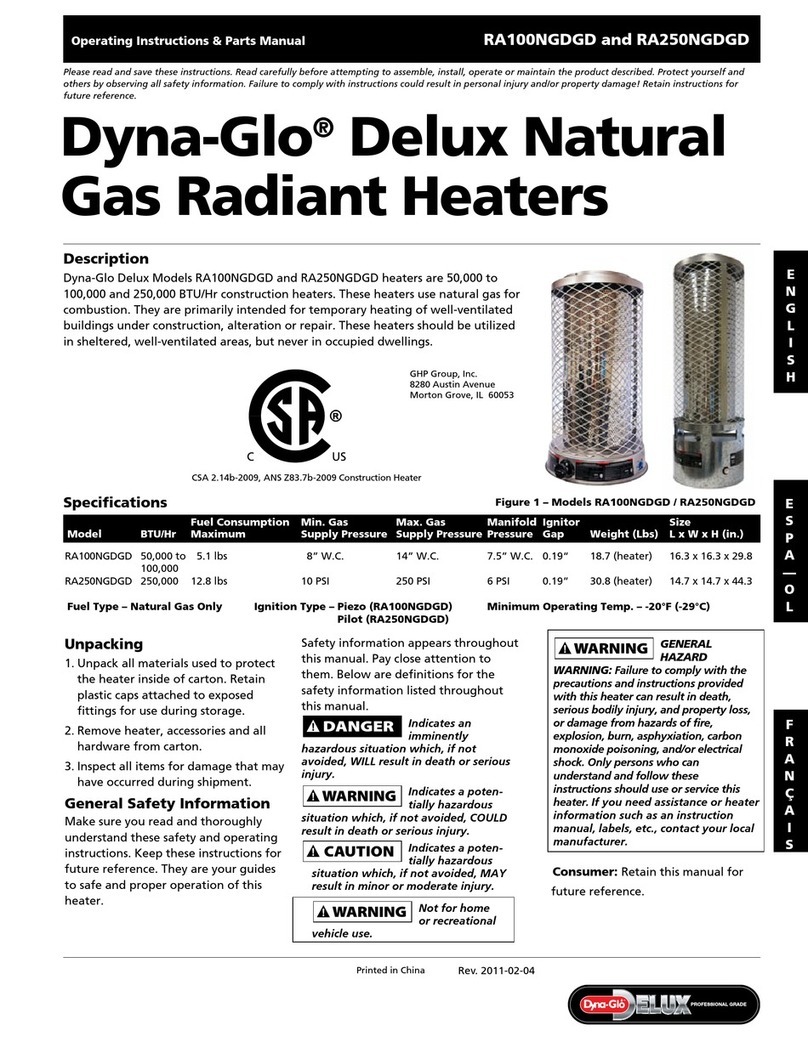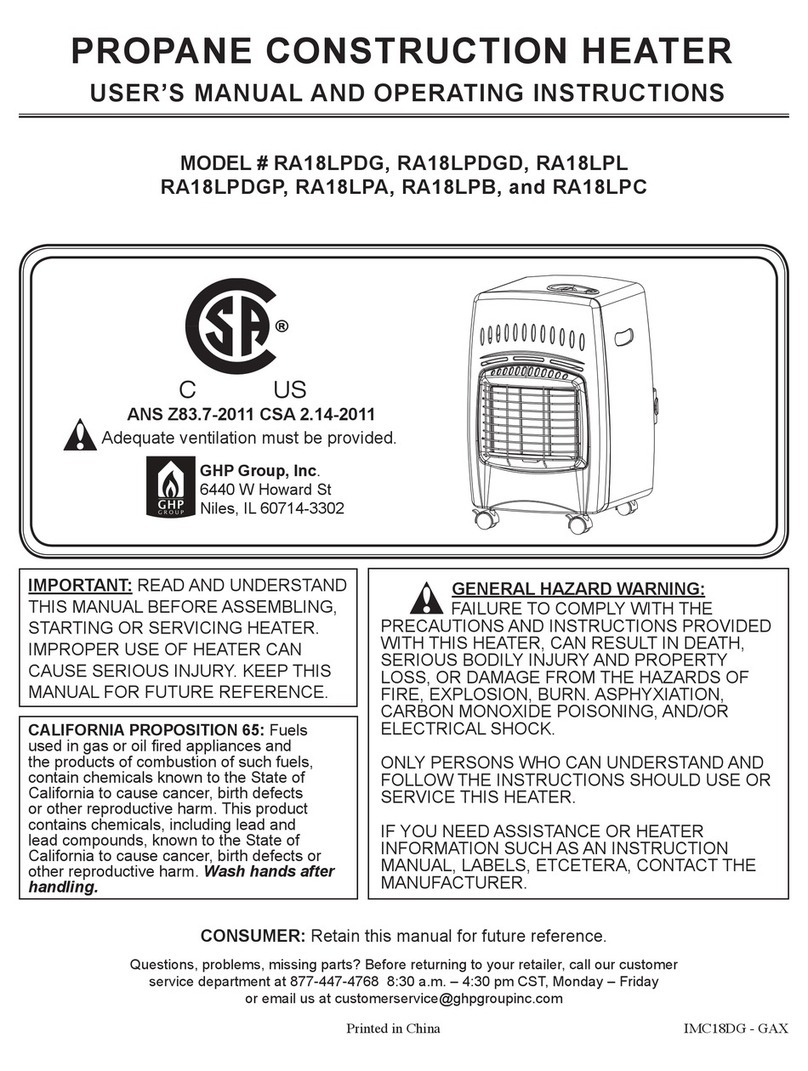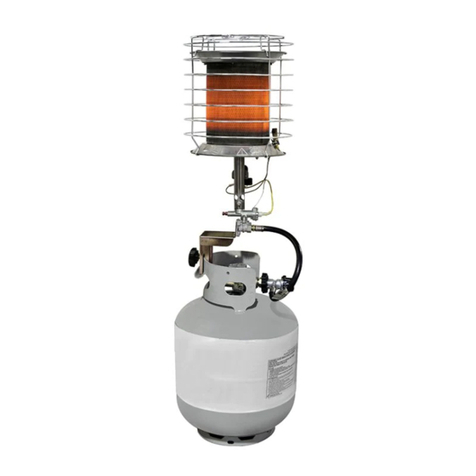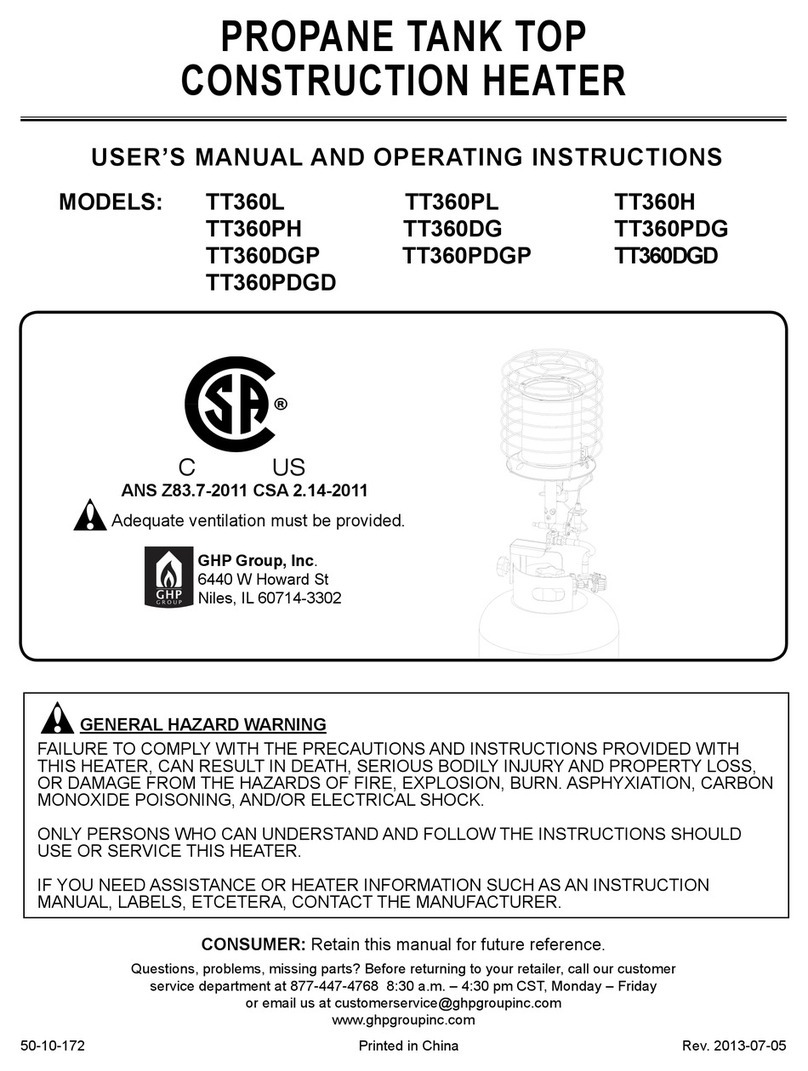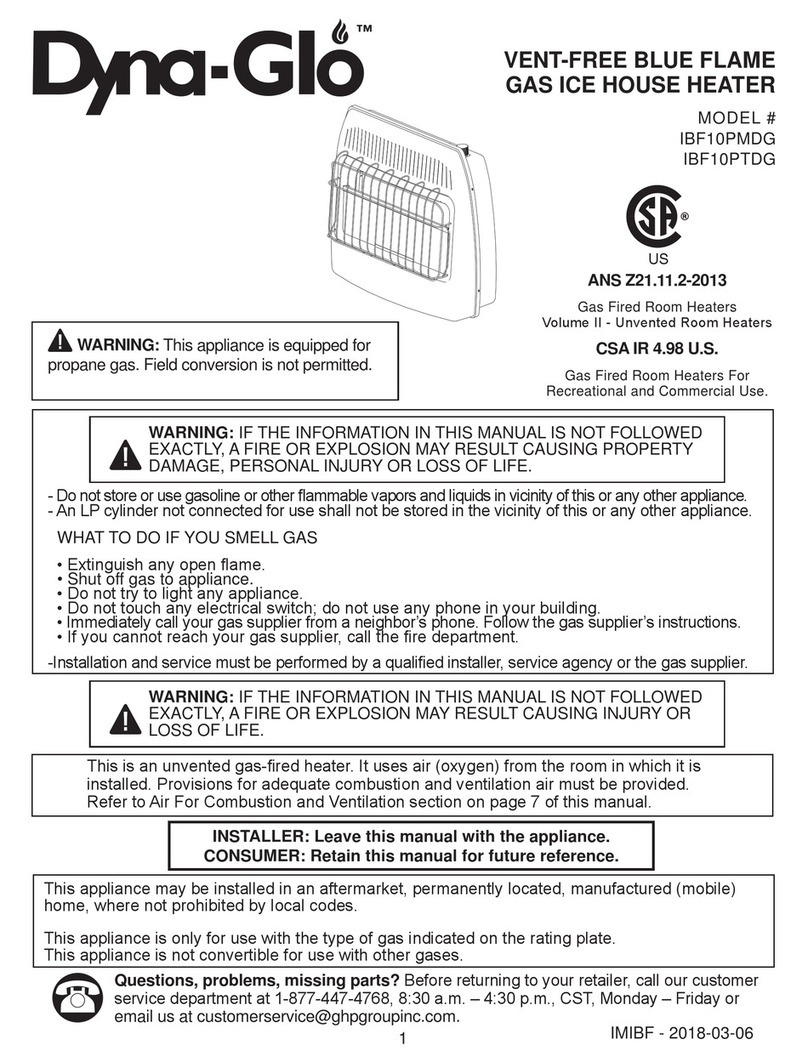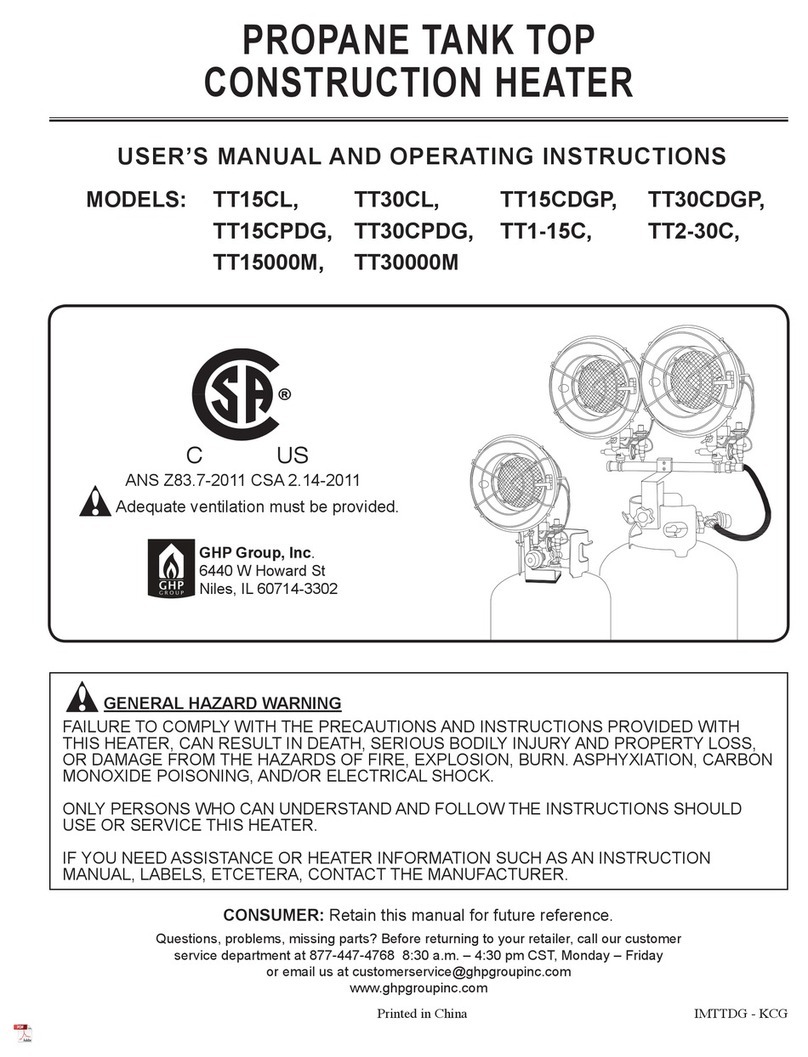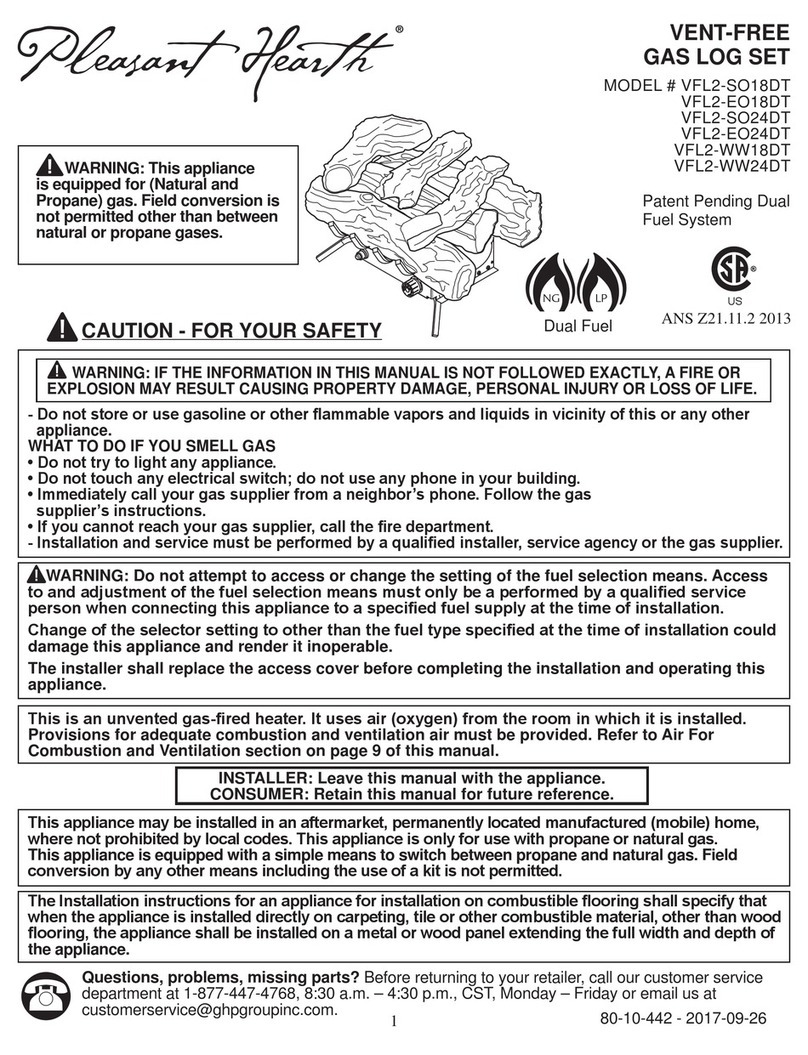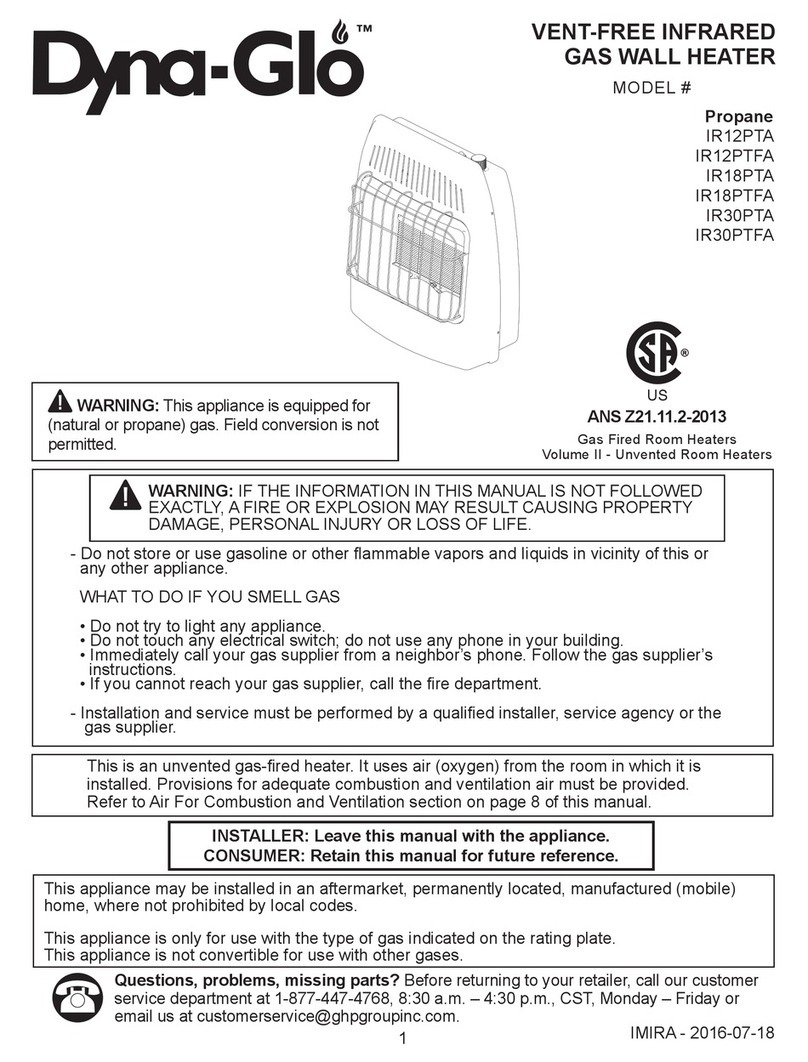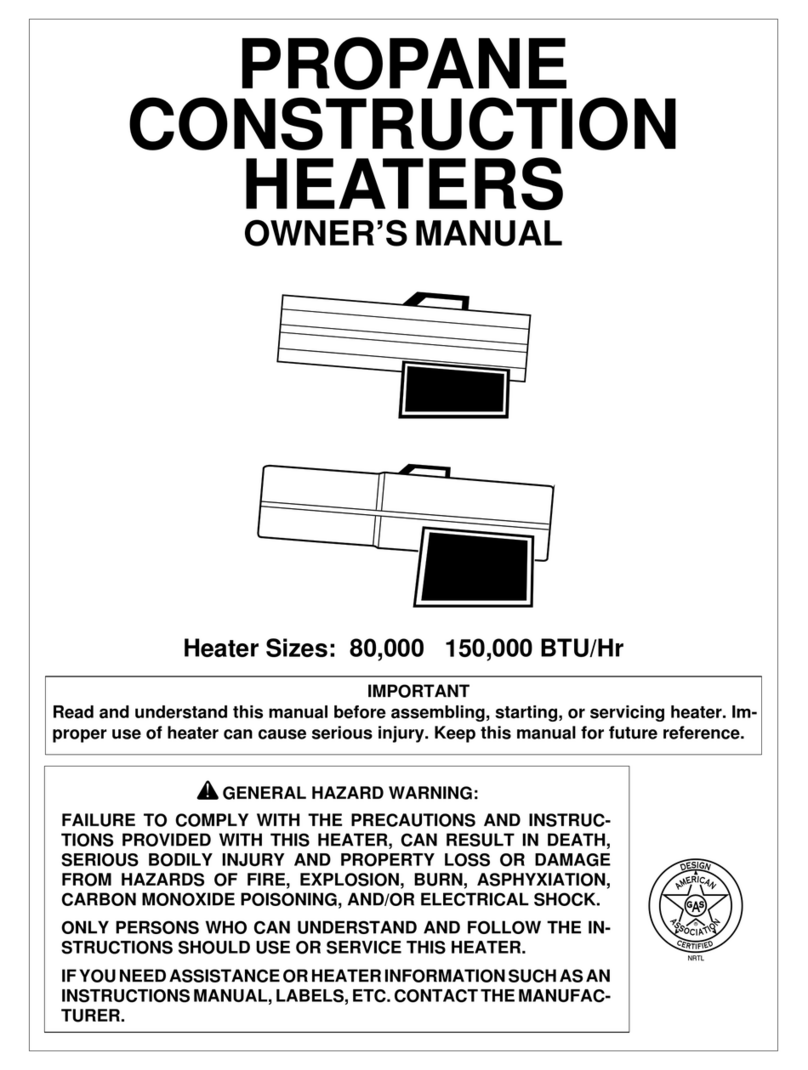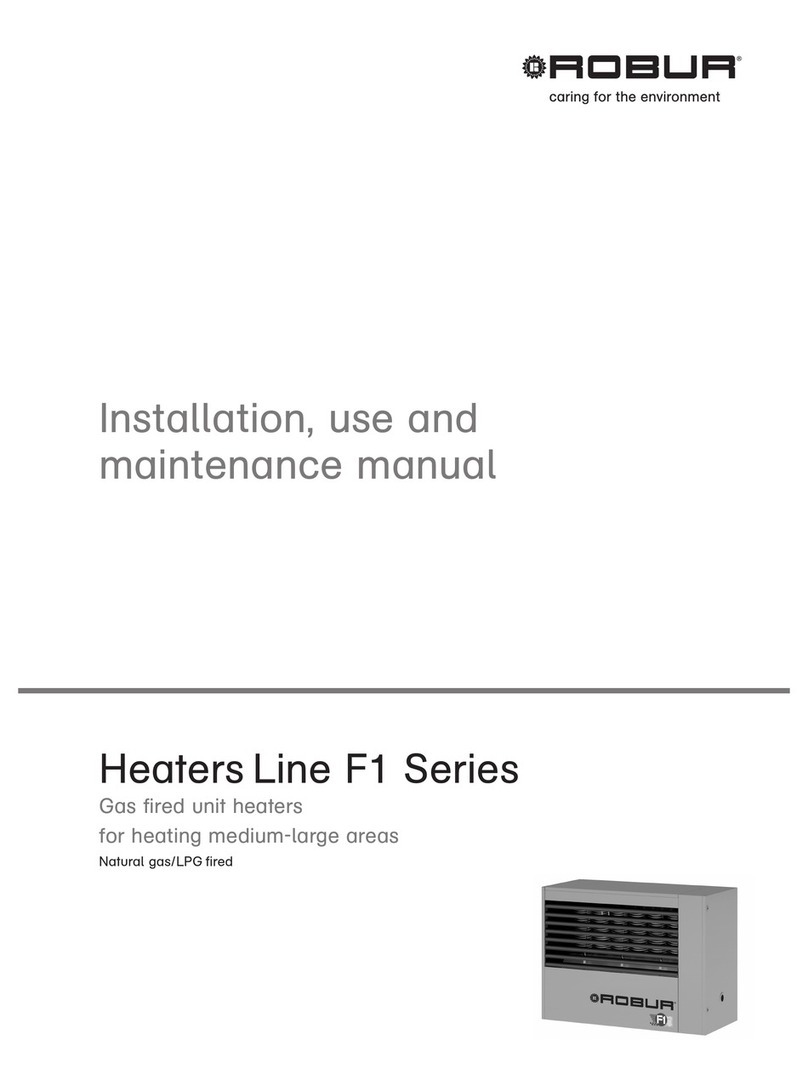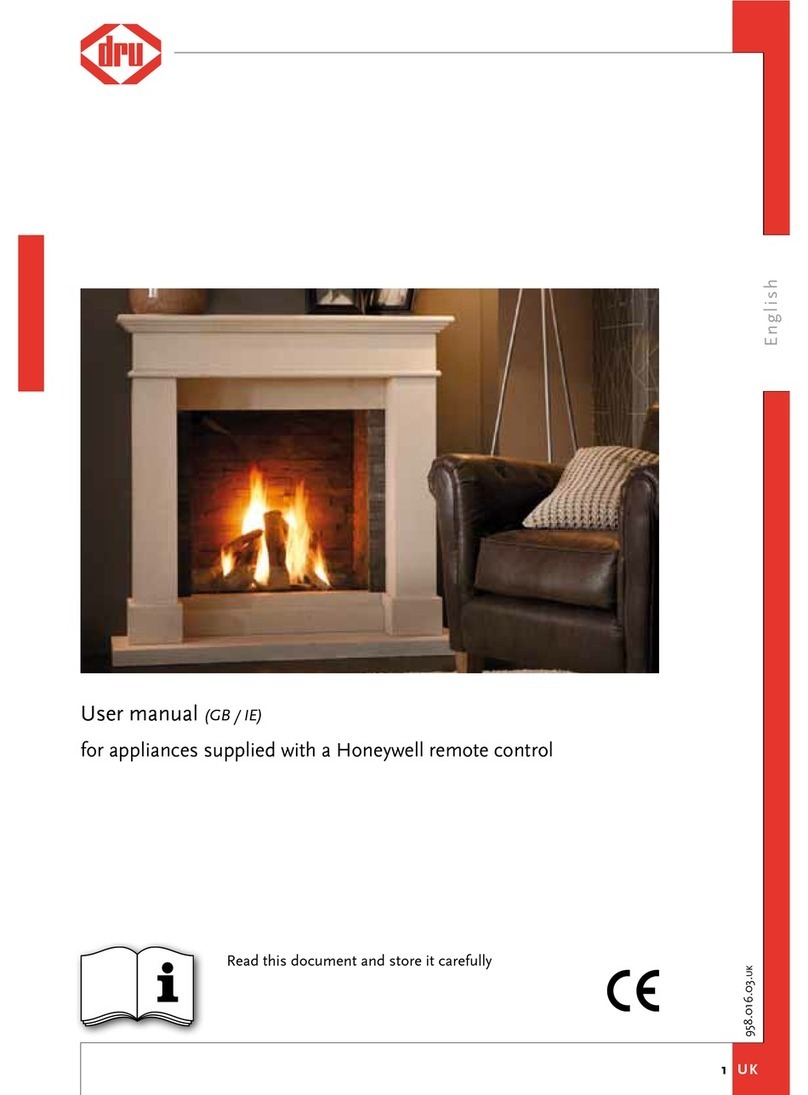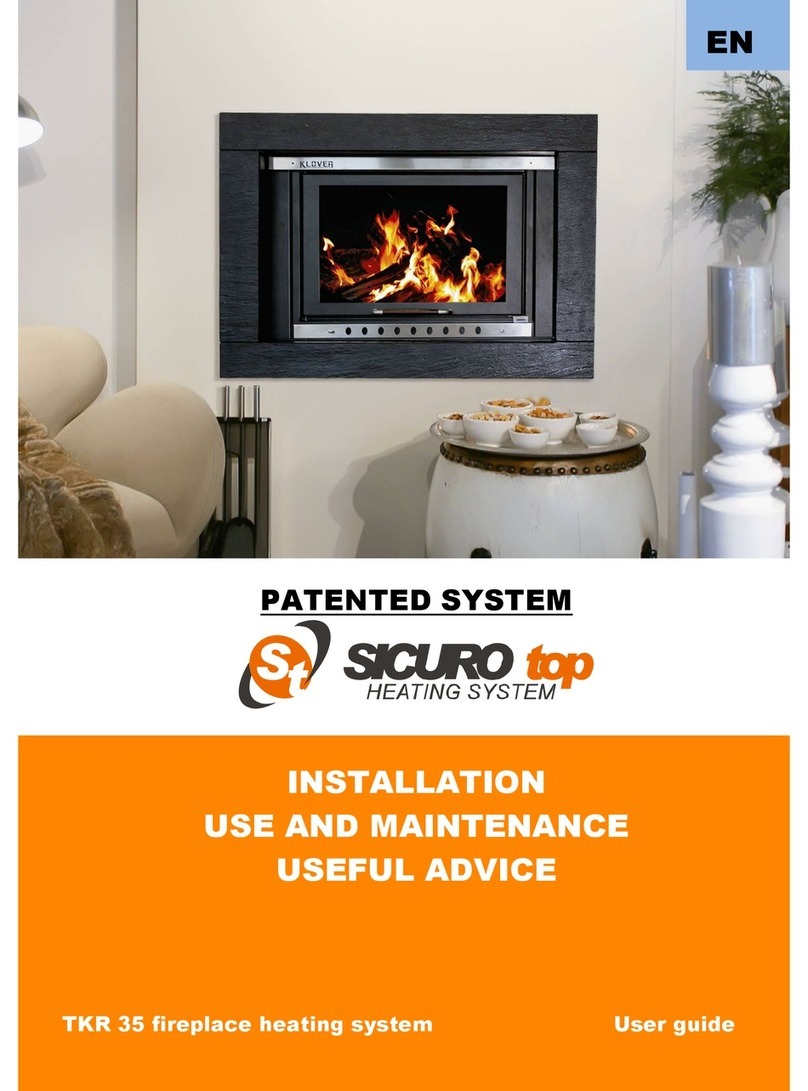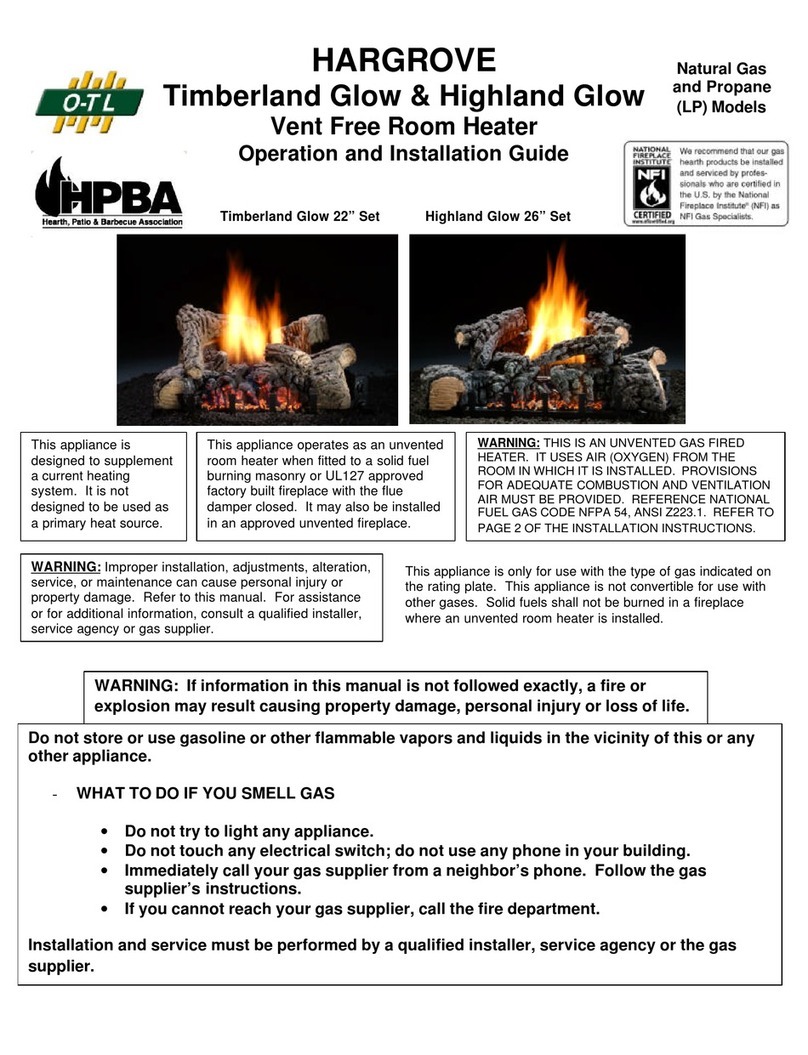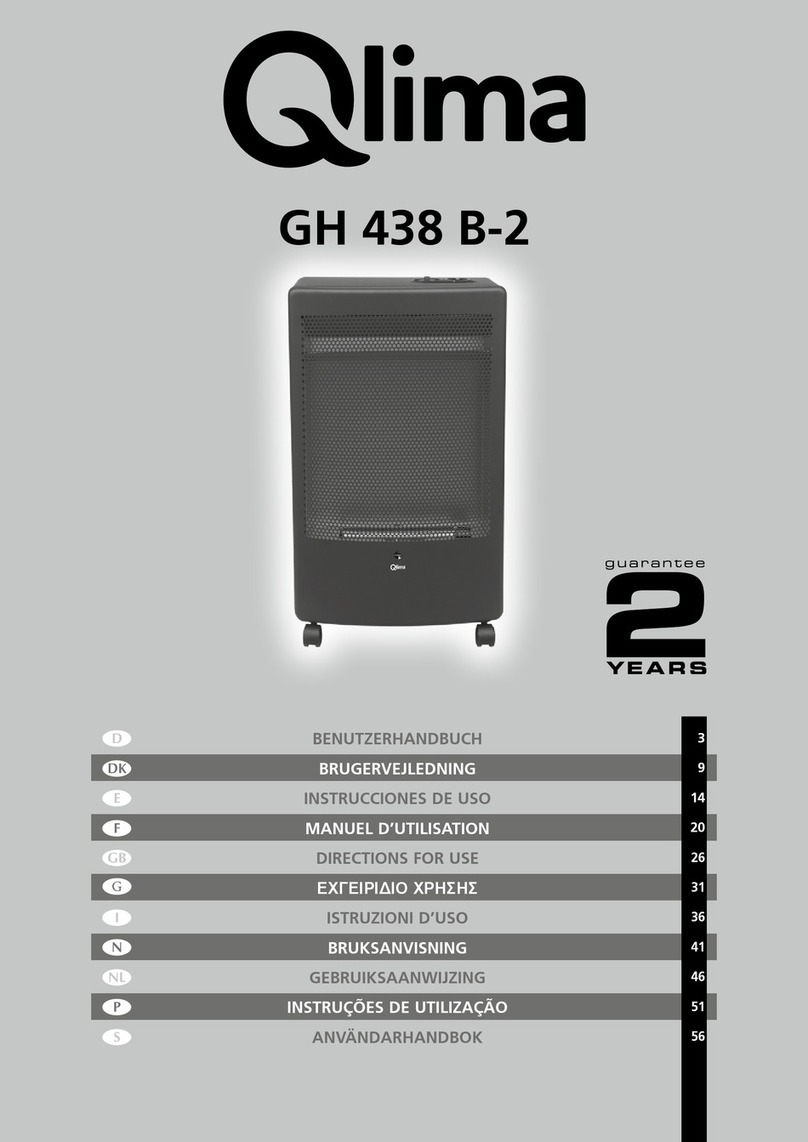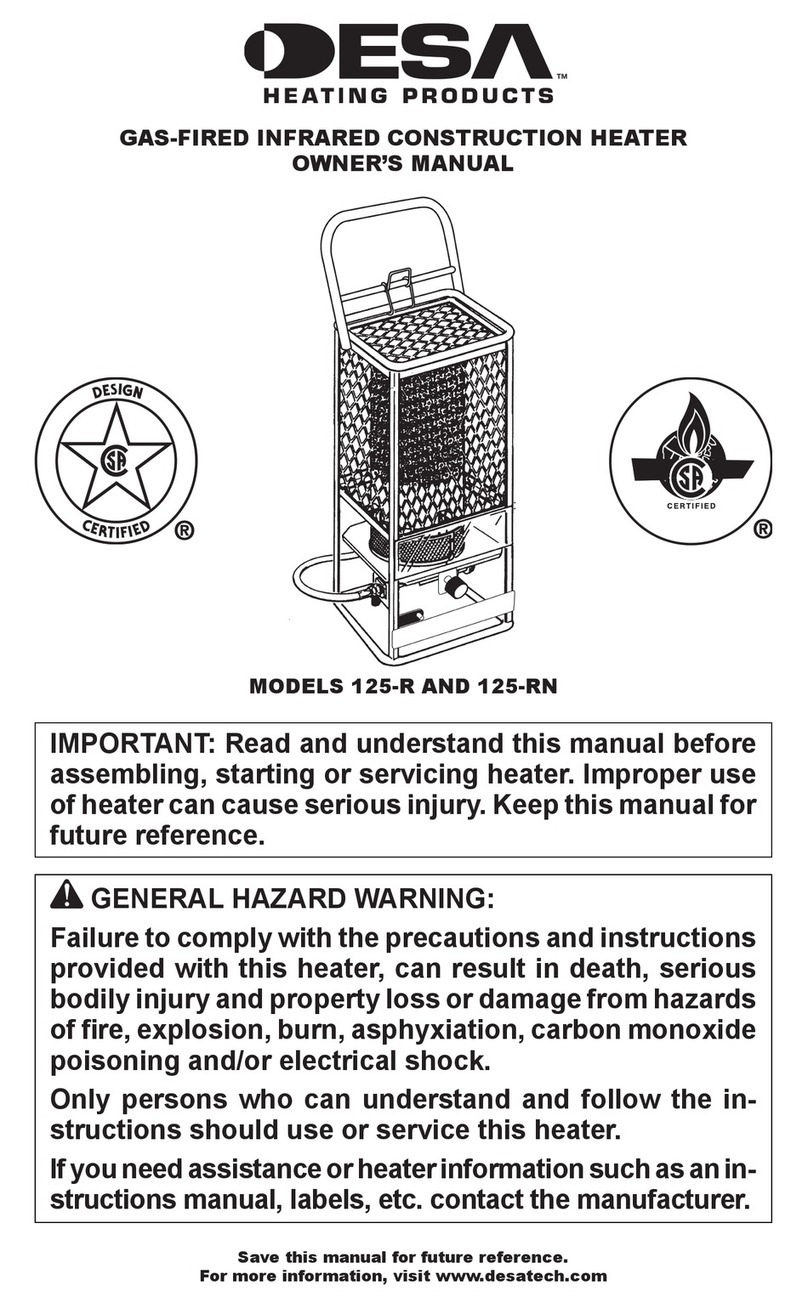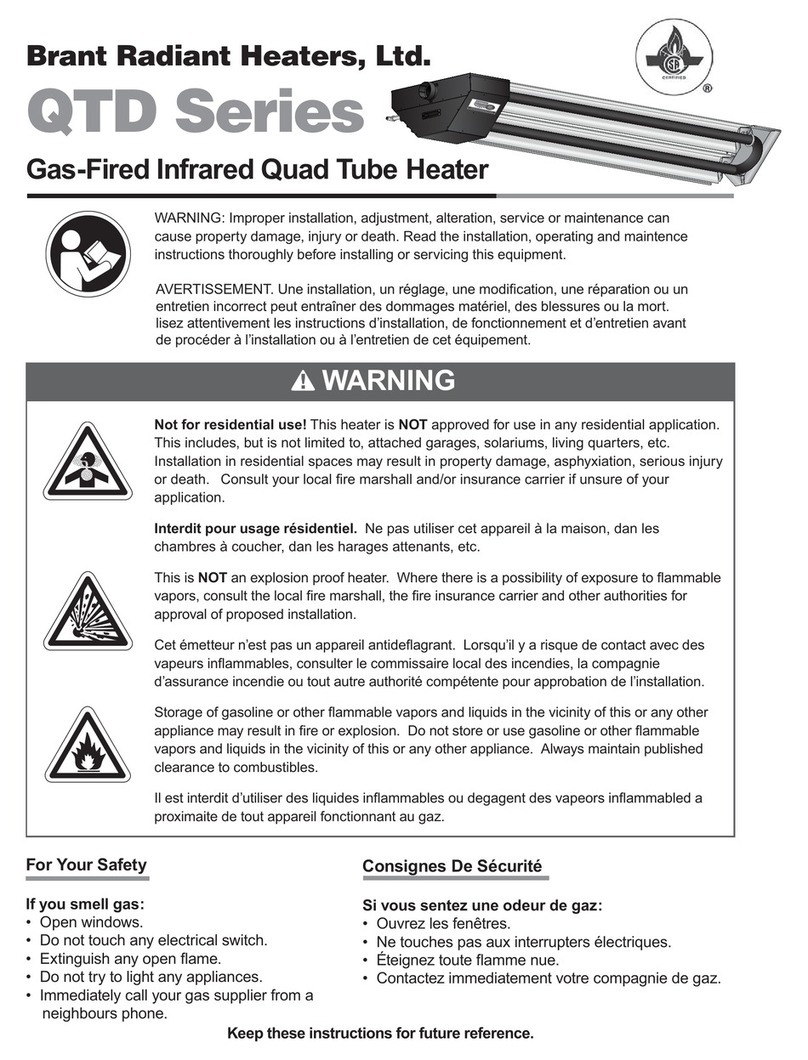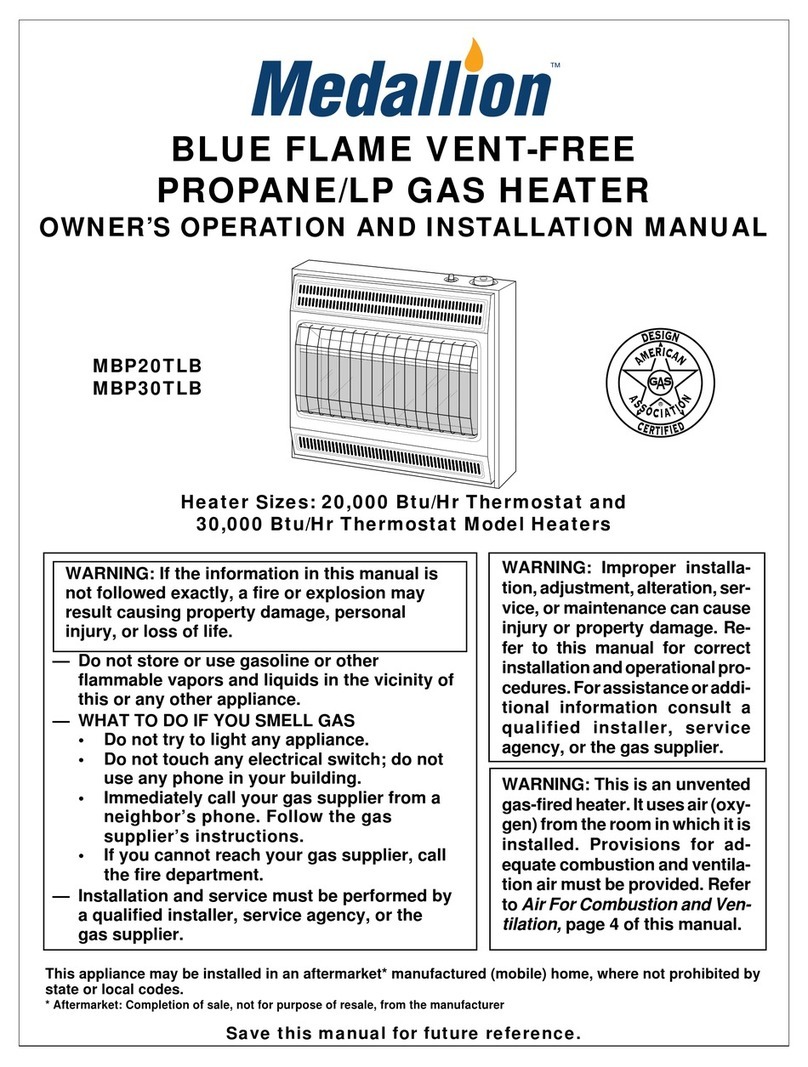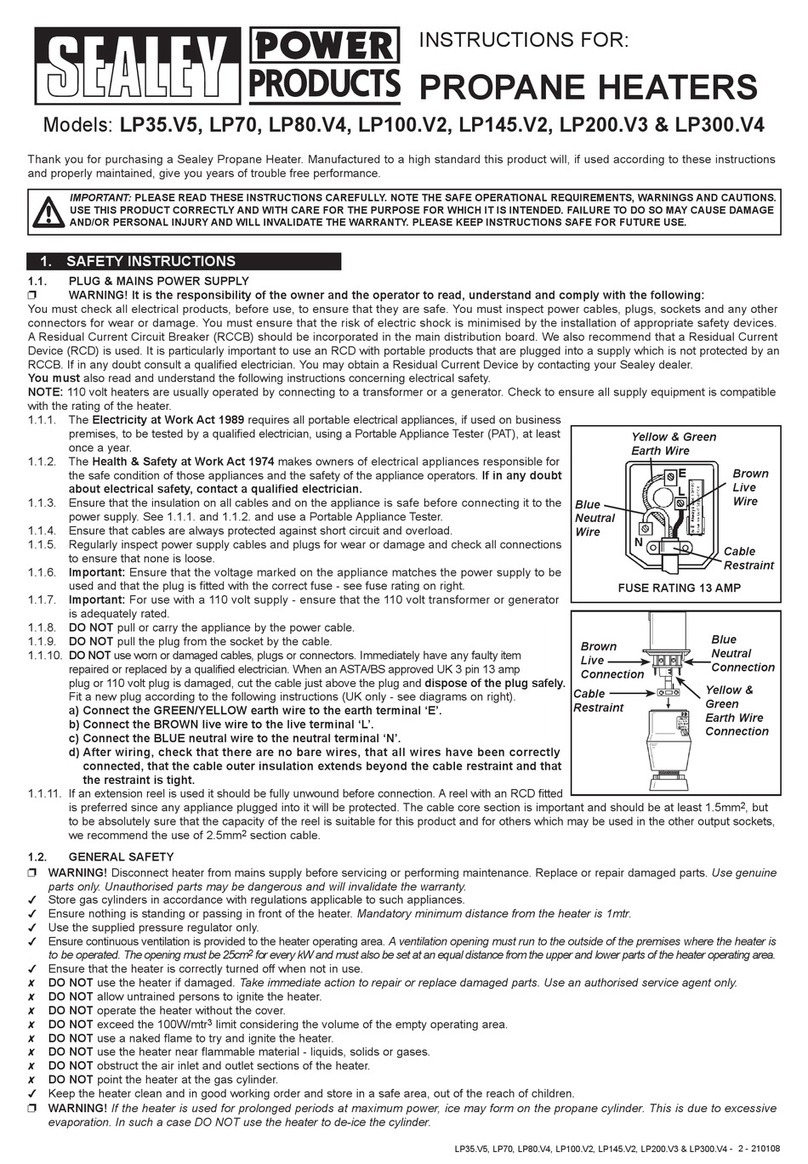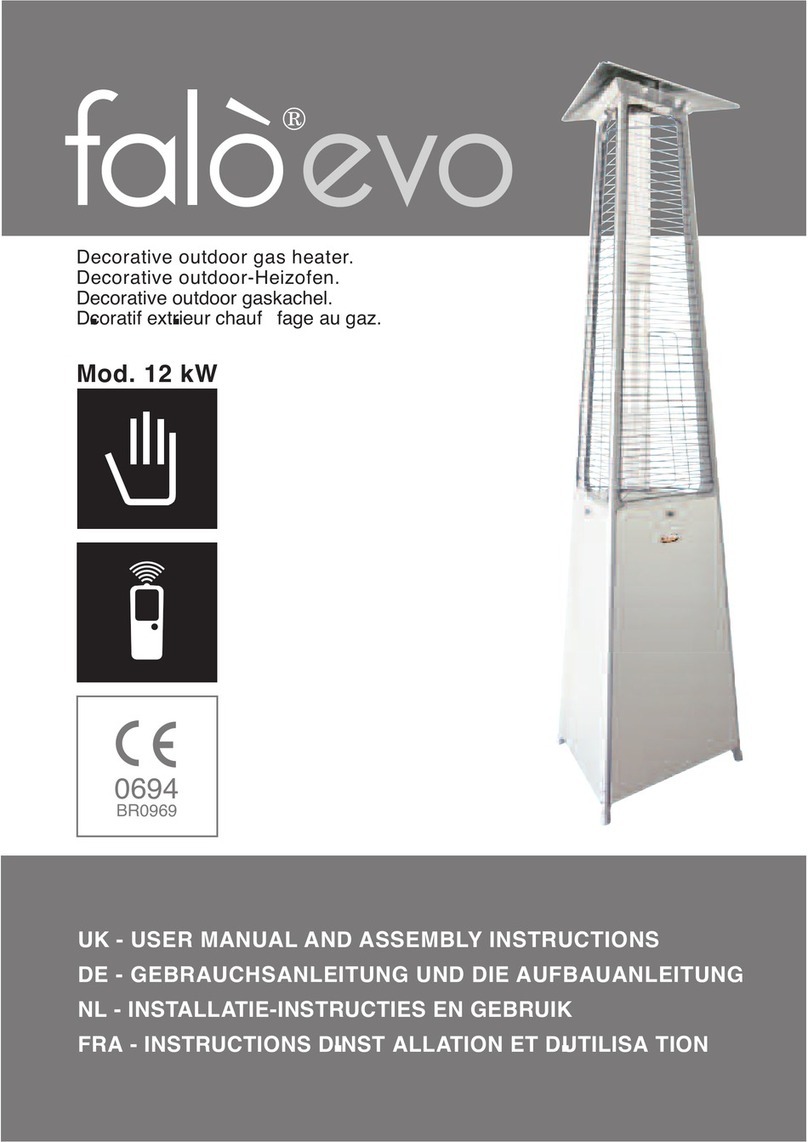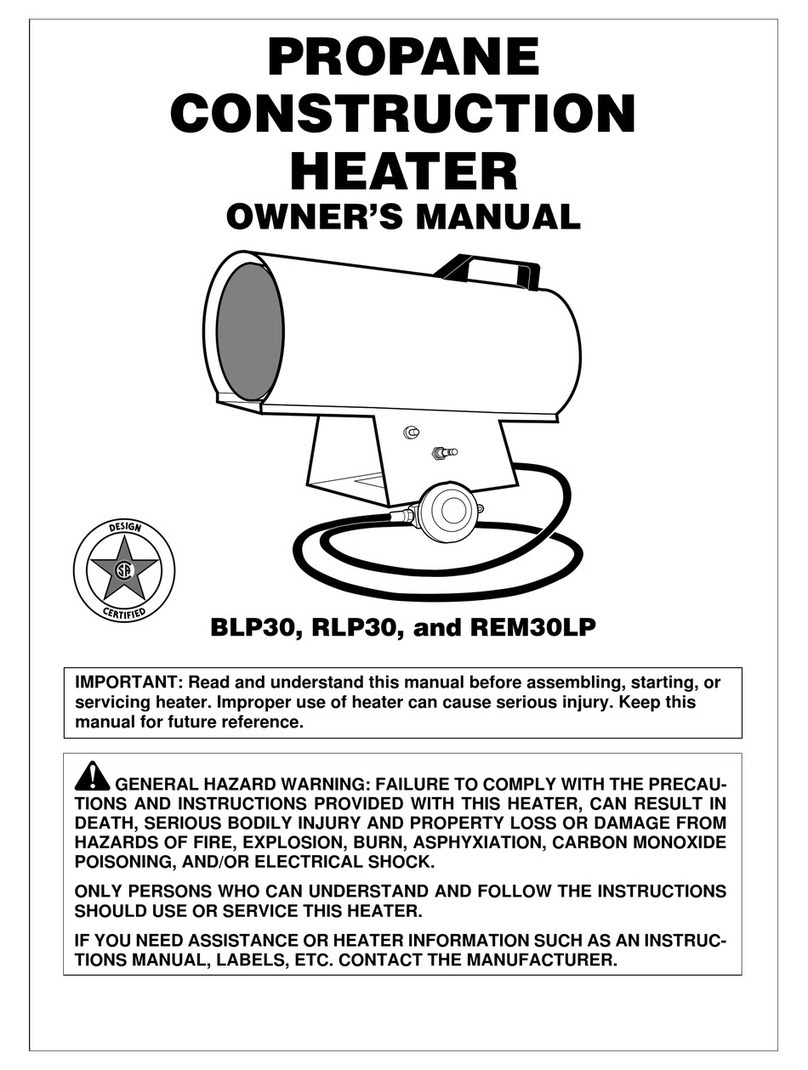
Installation
Review and under-
stand all of the
warnings in the Safety Information
Section on pages 1–3. They are required
to operate this heater safely. Follow all
local and state codes when operating
this heater.
After installing
all gas piping, and
making the proper connections, be sure
to check for leaks. Apply a 50/50
mixture of dish soap and water to
all connections. Bubbles forming are
evidence of a leak. Be sure to correct
all leaks at once!
1. Provide propane supply system as
outlined above.
2. Connect POL fitting on hose/regulator
assembly to propane tank(s) by turn-
ing the fitting COUNTERCLOCKWISE
into the threads on the valve on top
of the tank. Finish by tightening
firmly, using 7/8” wrench.
IMPORTANT: To protect the regulator
from weather damage, tighten the
fitting with the black adjustment knob
pointing down.
3. Connect female end of hose to the
inlet connector of the heater, and
tighten firmly with a wrench.
IMPORTANT: Use extra piping or hose
if necessary to connect the heater to the
gas supply, but always use the regulator
supplied with the heater.
4. Open supply valve on propane tank(s)
SLOWLY.
NOTE: If this valve is not opened slowly,
the excess flow check valve on the tank
will interrupt the gas flow. If this
happens, close the supply valve and
reopen slowly.
5. Adjust the regulator to between 7
and 10 PSIG.
Do not adjust the
regulator above 10
PSIG or below 7 PSIG, or the heater may
not operate properly.
6. Check all connections for leaks.
Never use an open
flame to check for
leaks. Apply a 50/50 solution of liquid
dish soap and water to check all
connections. Correct all leaks
immediately.
7. Close propane supply valve.
Ventilation
Always follow the
minimum fresh air
ventilation requirements. If these
guidelines are not followed, carbon
monoxide poisoning can occur. Always
provide proper amounts of fresh air
before operating this heater.
Provide at least three square feet of
fresh, outside air for each 100,000
BTU/Hr of rating. This heater requires
a fresh air opening of at least 11.25
square feet. Provide extra fresh air if
more heaters are being used.
Operation
Review and under-
stand all of the
warnings in the Safety Information
Section, on pages 1–3. They are required
to operate this heater safely. Follow all
local and state codes when operating
this heater.
TO START HEATER
1. Follow all safety, installation and
ventilation instructions in this
manual.
2. Position the heater on a stable and
level surface, and be sure that no
drafts blow into the inlet or outlet
of the heater.
3. Plug the power cord of the heater
into a three hole grounded extension
cord. Be sure that the extension cord
is at least 6 feet long, and is UL listed.
EXTENSION CORD SIZE
REQUIREMENT
• Up to 50 feet long, use 18 AWG
rated cord.
• 51 to 100 feet long, use 16 AWG
rated cord.
• 101 to 200 feet long, use 14 AWG
rated cord.
4. Plug extension cord into a 120 volt/60
hertz, three hole grounded outlet.
5. Open supply valve on propane tank(s)
SLOWLY.
NOTE: If this valve is not opened slowly,
the excess flow check valve on the tank
will interrupt the gas flow. If this
happens, close the supply valve and
reopen slowly.
6. Adjust the regulator to between 7
and 10 PSIG.
NOTE: The higher regulator setting
will enable the heater to produce
more heat.
4
ProFitterTM & Dyna-GloTM Operating Instructions and Parts Manual
ProFitterTM & Dyna-GloTM
Propane Construction Heater
RMC-FA300PF/DG/DGD
For Technical Support or Troubleshooting, Call: 1-877-447-4768
Figure 3 – Regulator with Vent Pointing
Down
POL Fitting
Supply
Valve Hose
Regulator
Propane/LP
Tank
Adjustment Knob
(Pointing Down)
Figure 4 – Hose and Inlet Connector
Hose
Inlet Connector
4
Dyna-GloTM Delux Operating Instructions and Parts Manual RMC-FA300DGD
For Technical Support or Troubleshooting, Call: 1-877-447-4768, 8:30 am - 4:30 pm CST www.ghpgroupinc.com
Dyna-GloTM
Figure 4 – Hose and Inlet Connector
Hose
Inlet Connector
Installation
Review and under-
stand all of the
warnings in the Safety Information
Section on pages 1–3. They are required to
operate this heater safely. Follow all local
and state codes when operating this
heater.
After installing
all gas piping, and
making the proper connections, be sure
to check for leaks. Apply a 50/50
mixture of dish soap and water to
all connections. Bubbles forming are
evidence of a leak. Be sure to correct
all leaks at once!
1. Provide propane supply system as
outlined above.
2. Connect POL fitting on hose/regulator
assembly to propane tank(s) by turning
the fitting COUNTERCLOCKWISE
into the threads on the valve on top of
the tank. Finish by tightening firmly,
using 7/8” (22.2 mm) wrench.
IMPORTANT: To protect the regulator
from weather damage, tighten the
fitting with the black adjustment knob
pointing down.
3. Connect female end of hose to the
inlet connector of the heater, and
tighten firmly with a wrench.
IMPORTANT: Use extra piping or hose
if necessary to connect the heater to the
gas supply, but always use the regulator
supplied with the heater.
4. Open supply valve on propane tank(s)
SLOWLY.
NOTE: If this valve is not opened slowly,
the excess flow check valve on the
tank will interrupt the gas flow. If this
happens, close the supply valve and
reopen slowly.
5. Adjust the regulator to between 7
and 10 PSIG.
Do not adjust the
regulator above 10
PSIG or below 7 PSIG, or the heater may
not operate properly.
6. Check all connections for leaks.
Never use an open
flame to check for
leaks. Apply a 50/50 solution of liquid
dish soap and water to check all
connections. Correct all leaks
immediately.
7. Close propane supply valve.
Ventilation
Always follow the
minimum fresh air
ventilation requirements. If these
guidelines are not followed, carbon
monoxide poisoning can occur. Always
provide proper amounts of fresh air
before operating this heater.
Provide at least three square feet (0.28 m²)
of fresh, outside air for each 100,000 BTU/
Hr of rating. This heater requires
a fresh air opening of at least 11.25 square
feet (1.05 m²). Provide extra fresh air if
more heaters are being used.
– Do not use this heater for heating
human living quarters.
– Use of direct-fired heaters in the
construction environment can result
in exposure to levels of CO, CO2, and
NO2 considered to be hazardous to
health and potentially life threatening.
– Do not use in unventilated areas
– Know the signs of CO and CO2
poisoning
– Headaches, stinging eyes
– Dizziness, disorientation
– Difficulty breathing, feels of being
suffocated
– Proper ventilation air exchange (OSHA
29 CFR 1926.57) to support combustion
and maintain acceptable air quality
shall be provided in accordance with
OSHA 29 CFR Part 1926.154, ANSI
A10.10 Safety Requirements for
Temporary and Portable Space Heating
Devices and Equipment used in the
Construction Industry or the Natural
Gas and Propane Installation Codes
CSA B149.1
– Periodically monitor levels of CO, CO2
and NO2 existing at the construction
site – at the minimum at the start of
the shift and after 4 hours.
– Provide ventilation air exchange,
either natural or mechanical, as
required to maintain acceptable indoor
air quality.
Operation
Review and under-
stand all of the
warnings in the Safety Information
Section, on pages 1–3. They are required
to operate this heater safely. Follow all
local and state codes when operating this
heater.
TO START HEATER
1. Follow all safety, installation and
ventilation instructions in this
manual.
2. Position the heater on a stable and
level surface, and be sure that no
drafts blow into the inlet or outlet
of the heater.
3. Plug the power cord of the heater
into a three hole grounded extension
cord. Be sure that the extension cord
is at least 6 feet long, and is UL listed.
Figure 3 – Regulator with Vent Pointing
Down
POL Fitting
Supply
Valve Hose
Regulator
Propane/LP
Tank
Adjustment Knob
(Pointing Down)
NEVER LEAVE THE HEATER
UNATTENDED WHILE BURNING!
